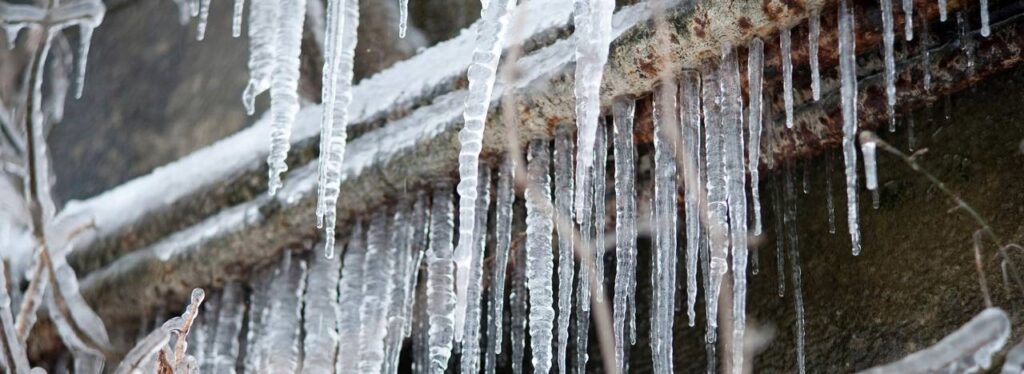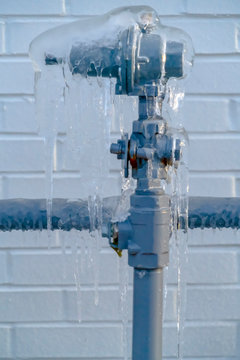Tips to Protect Your Plumbing from Cold Weather: Essential Tips
Tips to Protect Your Plumbing from Cold Weather: Essential Tips
Blog Article
This article below pertaining to How to prepare your home plumbing for winter weather is seriously entertaining. You should look it over.

Winter can ruin your pipes, especially by freezing pipelines. Right here's exactly how to prevent it from occurring and what to do if it does.
Intro
As temperature levels drop, the risk of icy pipes increases, possibly causing pricey fixings and water damage. Understanding exactly how to avoid icy pipelines is critical for homeowners in cold environments.
Avoidance Tips
Protecting at risk pipelines
Wrap pipelines in insulation sleeves or use heat tape to safeguard them from freezing temperatures. Focus on pipes in unheated or exterior locations of the home.
Heating techniques
Maintain indoor rooms properly warmed, specifically areas with plumbing. Open closet doors to allow warm air to circulate around pipelines under sinks.
How to recognize icy pipes
Search for reduced water flow from faucets, uncommon smells or sounds from pipes, and noticeable frost on exposed pipelines.
Long-Term Solutions
Architectural changes
Think about rerouting pipes far from outside wall surfaces or unheated areas. Add added insulation to attics, basements, and crawl spaces.
Upgrading insulation
Invest in top quality insulation for pipelines, attics, and walls. Appropriate insulation helps maintain constant temperature levels and reduces the danger of icy pipelines.
Securing Outdoor Plumbing
Yard pipes and outdoor faucets
Disconnect and drain yard hose pipes before winter season. Install frost-proof spigots or cover outdoor taps with shielded caps.
Comprehending Frozen Pipes
What triggers pipelines to ice up?
Pipelines freeze when exposed to temperatures below 32 ° F (0 ° C) for prolonged periods. As water inside the pipelines ices up, it increases, taxing the pipeline walls and possibly causing them to burst.
Threats and problems
Icy pipelines can cause water system disturbances, residential or commercial property damages, and expensive repair services. Ruptured pipelines can flood homes and create considerable architectural damages.
Signs of Frozen Water Lines
Determining icy pipelines early can stop them from rupturing.
What to Do If Your Pipes Freeze
Immediate actions to take
If you believe icy pipelines, maintain taps open up to soothe pressure as the ice thaws. Utilize a hairdryer or towels soaked in warm water to thaw pipelines slowly.
Conclusion
Avoiding frozen pipes needs aggressive procedures and fast feedbacks. By recognizing the causes, indications, and preventive measures, property owners can secure their plumbing throughout cold weather.
5 Ways to Prevent Frozen Pipes
Drain Outdoor Faucets and Disconnect Hoses
First, close the shut-off valve that controls the flow of water in the pipe to your outdoor faucet. Then, head outside to disconnect and drain your hose and open the outdoor faucet to allow the water to completely drain out of the line. Turn off the faucet when done. Finally, head back to the shut-off valve and drain the remaining water inside the pipe into a bucket or container. Additionally, if you have a home irrigation system, you should consider hiring an expert to clear the system of water each year.
Insulate Pipes
One of the best and most cost-effective methods for preventing frozen water pipes is to wrap your pipes with insulation. This is especially important for areas in your home that aren’t exposed to heat, such as an attic. We suggest using foam sleeves, which can typically be found at your local hardware store.
Keep Heat Running at 65
Your pipes are located inside your walls, and the temperature there is much colder than the rest of the house. To prevent your pipes from freezing, The Insurance Information Institute suggests that you keep your home heated to at least 65 degrees, even when traveling. You may want to invest in smart devices that can keep an eye on the temperature in your home while you’re away.
Leave Water Dripping
Moving water — even a small trickle — can prevent ice from forming inside your pipes. When freezing temps are imminent, start a drip of water from all faucets that serve exposed pipes. Leaving a few faucets running will also help relieve pressure inside the pipes and help prevent a rupture if the water inside freezes.
Open Cupboard Doors
Warm your kitchen and bathroom pipes by opening cupboards and vanities. You should also leave your interior doors ajar to help warm air circulate evenly throughout your home.

Do you like more info about Helpful Tips to Prevent Frozen Pipes this Winter? Try leaving a remark down below. We will be pleased to hear your responses about this page. Hoping that you visit us again later on. Sharing is caring. You won't know, you could be doing someone a favor. Thank you for your time. Kindly come by our website back soon.
Click Here Report this page